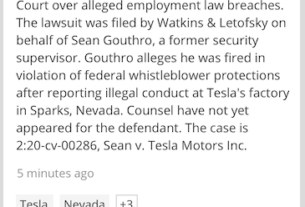Lex Machina pioneered the introduction of interactive litigation analytics for the law firms with the launch of the Intellectual Property product in end uses. It launched as a project at Stamford Law School. Now a LexisNexis product, they offer one of the most sophisticated analytics products in the legal market and cover all types of federal, They are also expanding their coverage of state litigation.
product in end uses. It launched as a project at Stamford Law School. Now a LexisNexis product, they offer one of the most sophisticated analytics products in the legal market and cover all types of federal, They are also expanding their coverage of state litigation.
Today Lex Machina is releasing the 2021 Patent Litigation Report which analyzes all federal patent litigation.
- W.D, Tex., D Del., and E.D, Tex. have the highest number of patent filings in 2021
-
Patent case filings are consolidating more into the top three courts, from 47% in 2019 to 57% in 2021.
-
Federal PTAB appellate case filings fell 40% between 2020 and 2021.
-
23% of federal PTAB appellate cases that terminated from 2019 to 2021 were ultimately reversed.
-
34% of federal patent appellate cases that terminated from 2019 to 2021 were ultimately reversed.
-
Samsung, Google, Apple, Microsoft and Amazon were the most active patent defendants in 2021.
-
WSOU Investments LLC ( a patent monetization company) was the most active plaintiff in patent litigation last year.
-
Judge Albright was assigned to 23% of all patent cases filed in 2021.
- Fish & Richardson top the list of defendant firms representing 669 defendants in 38 districts between 2019 and 2021.
Data and Methodology – I have to confess my favorite part of this report was the two pages explaining how the data was collected, normalized, reviewed, tagged. It is easy to generalize and oversimplify analytics. Lex Machina provides a public service by providing a “tutorial” supplement to the report..
Lex Machina supplements and corrects primary data from PACER in a variety of ways, including:
• Correcting errors ranging from spelling mistakes to complex data problems
• Normalizing data on judges, parties, law firms, and attorneys
• Extracting records of law firms and attorneys not found in docket reports
• Tagging and categorizing cases
• Annotating case resolutions, damages, and dispositive rulings
They even provide a graphic “Understanding Box Plots:


